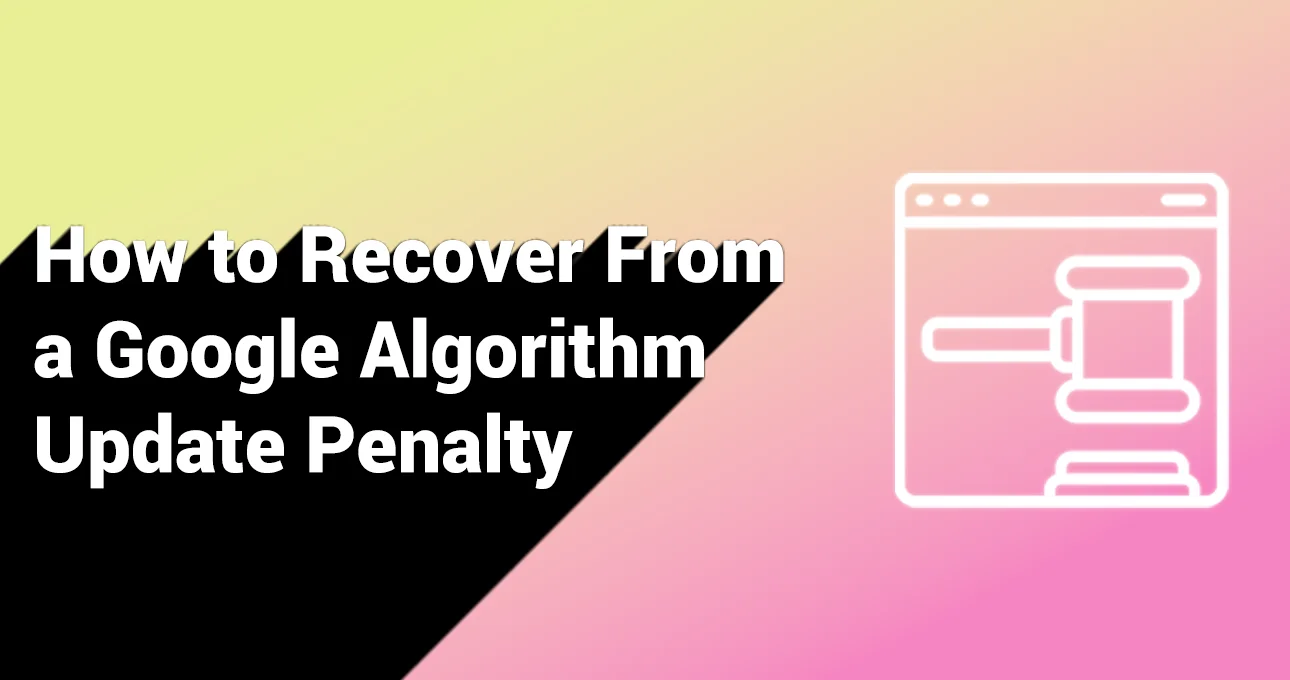How to Recover From a Google Algorithm Update Pena
How to Recover From a Google Algorithm Update Penalty
Few things strike fear into the hearts of website owners like a sudden drop in search rankings after a Google algorithm update. If you’ve noticed your traffic plummet, don’t panic. Understanding how to identify and recover from a Google penalty can save your website’s rankings and restore your online visibility.
In this guide, we’ll break down everything you need to know about Google algorithm updates, how to determine if you’ve been penalized, and actionable steps to recover effectively.
What Are Google Algorithm Updates?
Google frequently updates its algorithm to improve search results and provide users with the most relevant, high-quality content. Major updates, like Panda, Penguin, and Core Updates, target specific issues, such as:
-
- Low-quality content
- Keyword stuffing
- Spammy backlinks
- Poor user experience
While these updates are designed to enhance search accuracy, they can unintentionally hurt websites that fail to meet the new standards.
How to Identify a Google Algorithm Penalty
1. Sudden Drop in Traffic
Use tools like Google Analytics or Google Search Console to track your traffic. If you notice a sharp decline after an update, it’s a clear sign of a penalty.
2. Keyword Ranking Loss
Monitor your keyword rankings using tools like SEMrush or Ahrefs. A significant ranking drop could indicate that your site no longer meets Google’s criteria for certain terms.
3. Manual Action Notification
Log into Google Search Console to check for any manual action notifications. If your site violates Google’s guidelines, you’ll see details here.
Steps to Recover From a Google Penalty
1. Analyze the Update
Understand the nature of the algorithm update. Resources like Google’s official announcements, SEO blogs, and tools like MozCast or SERPmetrics can provide valuable insights into what changed.
2. Conduct a Website Audit
Run a comprehensive audit of your site to identify problem areas:
-
- Content Audit: Check for thin, duplicate, or outdated content.
- Backlink Audit: Use tools like Ahrefs or Link Detox to identify spammy or toxic backlinks.
- Technical SEO Audit: Identify issues like slow loading speeds, broken links, or mobile-unfriendly designs.
3. Fix Problematic Content
-
- Rewrite or remove low-quality, irrelevant, or duplicate content.
- Focus on creating high-value, original content that meets user intent.
- Add multimedia like images and videos to improve user engagement.
4. Disavow Toxic Backlinks
If spammy backlinks are the issue, use Google’s Disavow Tool to notify Google to ignore these links.
5. Improve User Experience
-
- Optimize your site for mobile users.
- Enhance loading speeds using tools like Google PageSpeed Insights.
- Simplify navigation to reduce bounce rates.
6. Update Your SEO Strategy
Adopt SEO best practices that align with Google’s current standards:
-
- Use long-tail keywords for better targeting.
- Ensure proper internal linking.
- Regularly update your site with fresh, relevant content.
7. Submit a Reconsideration Request
If your penalty was manual, address the issues mentioned in the Google Search Console notification and submit a reconsideration request.
How to Prevent Future Penalties
-
- Stay Informed: Follow SEO blogs and announcements to stay updated on algorithm changes.
- Regular Audits: Schedule monthly SEO audits to identify and address potential issues early.
- Focus on Quality: Prioritize high-quality content, natural backlinks, and positive user experiences.
- Follow Google’s Guidelines: Always adhere to Google’s Webmaster Guidelines to ensure compliance.
The Road to Recovery Takes Time
Recovering from a Google penalty isn’t an overnight process. Depending on the severity, it can take weeks or even months to regain your rankings. However, by addressing the root causes and committing to a long-term, ethical SEO strategy, you’ll not only recover but also future-proof your site against algorithm changes.
Need expert help to navigate the recovery process? Let’s create a tailored SEO plan to get your site back on track and keep it there!


We are actively engaging with waste to energy operators, concrete manufacturers, and the wider construction industry.
Most innovative and successful builders and real estate enterprises in the country, has been selected for the design-build expansion of Airsides A and E at Tampa International Airport.